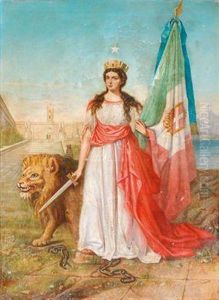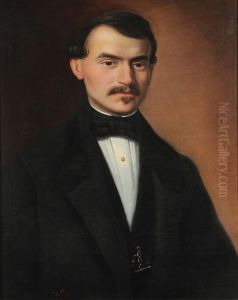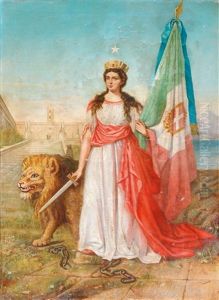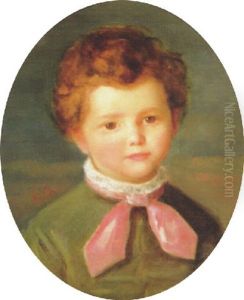Enrico Bon Paintings
Enrico Baj does not have a widely recognized artist counterpart by the name of Enrico Bon in historical or contemporary art records up to the present day. It's possible there may be confusion or a misspelling with the name Enrico Baj, who was a well-known Italian artist. Enrico Baj was born in Milan, Italy, in 1924 and passed away in 2003. He was a painter, sculptor, and writer, known for his eclectic and innovative contributions to the post-war European art scene. Baj's work is characterized by its humorous and irreverent approach, often critiquing political and social norms through a distinctive use of materials and imagery.
His artistic journey began at the Brera Academy in Milan, though he later distanced himself from formal art institutions, seeking a more independent path. Baj was a key figure in the Nuclear Art Movement, which he co-founded in the 1950s. This movement sought to express the anxieties of the nuclear age, combining elements of Dada and surrealism with a critical eye on contemporary politics and society. Baj's work from this period includes a series of paintings incorporating unconventional materials like tar, plastic, and industrial waste, reflecting the threat of nuclear disaster.
Throughout the 1960s and beyond, Baj continued to explore themes of authority, power, and absurdity, often incorporating figures of authority such as generals and judges into his compositions, depicted in a grotesque and satirical manner. His use of collage and assemblage, bringing together a wide array of found objects, became a hallmark of his style.
Enrico Baj's contributions to art were not limited to his visual creations. He was also an active participant in intellectual debates about art and society, writing numerous essays and books on the subject. Despite his critical stance towards many aspects of contemporary culture, Baj's work is imbued with a sense of playfulness and a deep affection for the possibilities of artistic expression.
His legacy is preserved in numerous public and private collections worldwide, and he remains a significant figure for those studying post-war European art, especially in the context of movements that challenge traditional artistic boundaries and societal norms.




